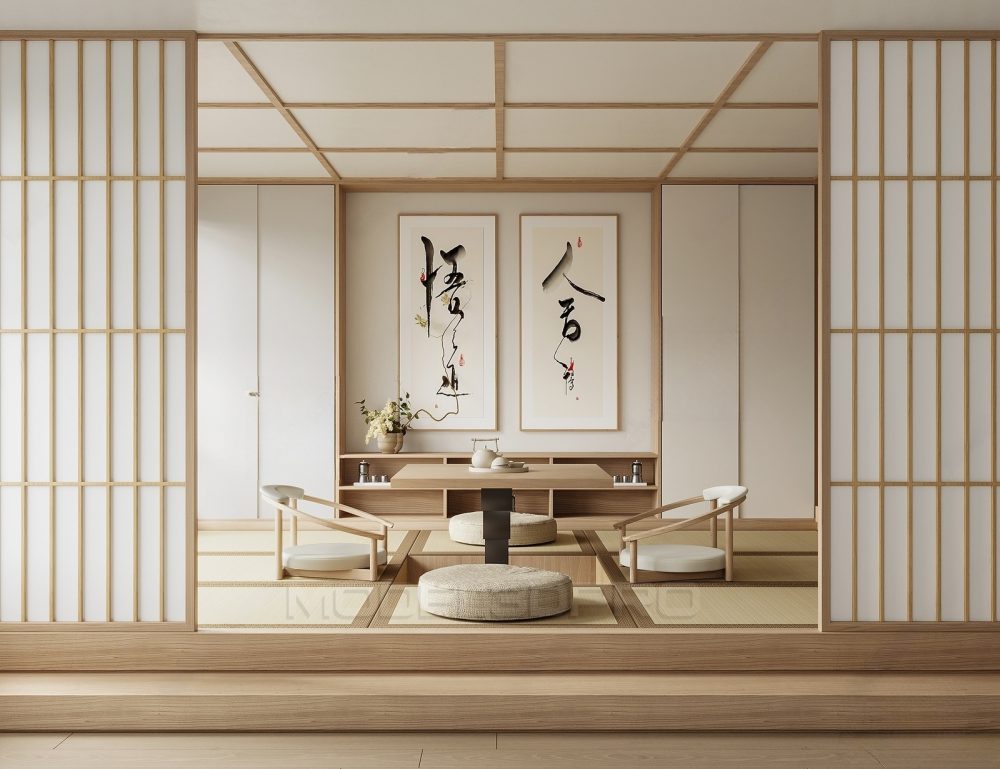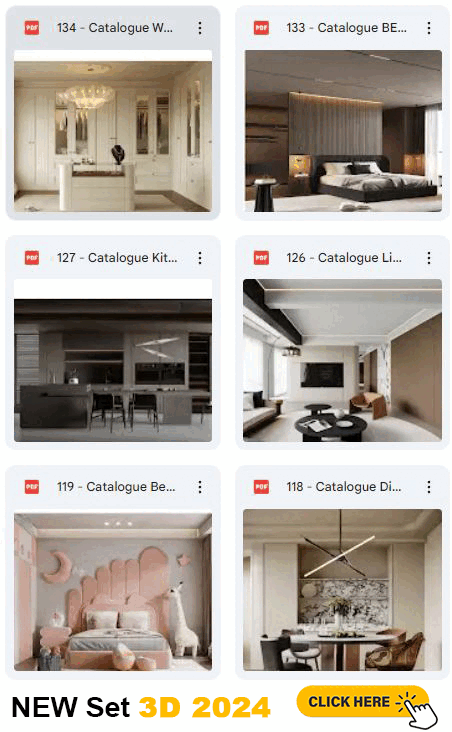The 3D teahouse is designed in a serene Japanese style, incorporating the use of light-colored wood as its main material. One of the striking features of this design is the sliding doors, known as “shoji,” which gracefully open on both sides. These doors are crafted from wood, adorned with small white-framed panels, reminiscent of traditional Japanese aesthetics. The floor is covered with wooden planks, exuding a warm and natural ambiance, and soft cushions are placed on top for added comfort. The seating arrangement follows the style of a “zabuton,” a traditional Japanese floor cushion, encircling a central table.
As you step into the teahouse, you are immediately enveloped in a sense of tranquility. The space is bathed in soft, diffused light, filtering through the translucent shoji doors. The delicate play of light and shadow creates a serene atmosphere, perfect for enjoying a cup of tea or engaging in peaceful conversation.
The interior is thoughtfully designed to create a harmonious blend of functionality and aesthetics. The walls are adorned with subtle Japanese motifs, such as delicate cherry blossoms or bamboo patterns, adding a touch of elegance to the space. The natural beauty of the wood is showcased through minimalistic furniture and clean lines, reflecting the simplicity and refinement of Japanese design philosophy.

The seating area is composed of low, comfortable cushions that encircle a low-lying table, providing an intimate and relaxed setting. The cushions are adorned with soft, muted fabrics in earthy tones, complementing the overall color scheme of the teahouse. Guests can comfortably recline on the cushions, enjoying the gentle support they provide while savoring their tea.
At the center of the seating area, the table acts as a focal point. It is crafted from the same light-colored wood as the rest of the teahouse, exhibiting a seamless flow in design. The table is adorned with a few carefully selected items—a delicate ceramic teapot, a small arrangement of fresh flowers, or perhaps a simple incense burner, all evoking a sense of mindfulness and attention to detail.
Underneath the table, a low-lying shelf discreetly stores a “gama,” a traditional Japanese foot-warmer. This feature allows guests to comfortably tuck their feet beneath the table, providing a cozy and authentic Japanese experience. The simplicity of this element adds to the overall ambiance and ensures that every aspect of the design is purposeful and aligned with the Japanese aesthetic.
The teahouse design promotes a sense of serenity, balance, and connection with nature. Large windows provide glimpses of a meticulously landscaped Japanese garden, featuring meticulously pruned bonsai trees, a small koi pond, and a stone pathway. The view outside serves as a soothing backdrop, further enhancing the tranquility within the teahouse.
In summary, this 3D teahouse design encapsulates the essence of Japanese aesthetics. With its light-colored wooden interior, shoji sliding doors, floor cushions, and low-lying table, it creates a serene and harmonious space that fosters relaxation and contemplation. This design file will undoubtedly be a valuable resource for architects and designers seeking to create tea rooms or Japanese-inspired spaces.








